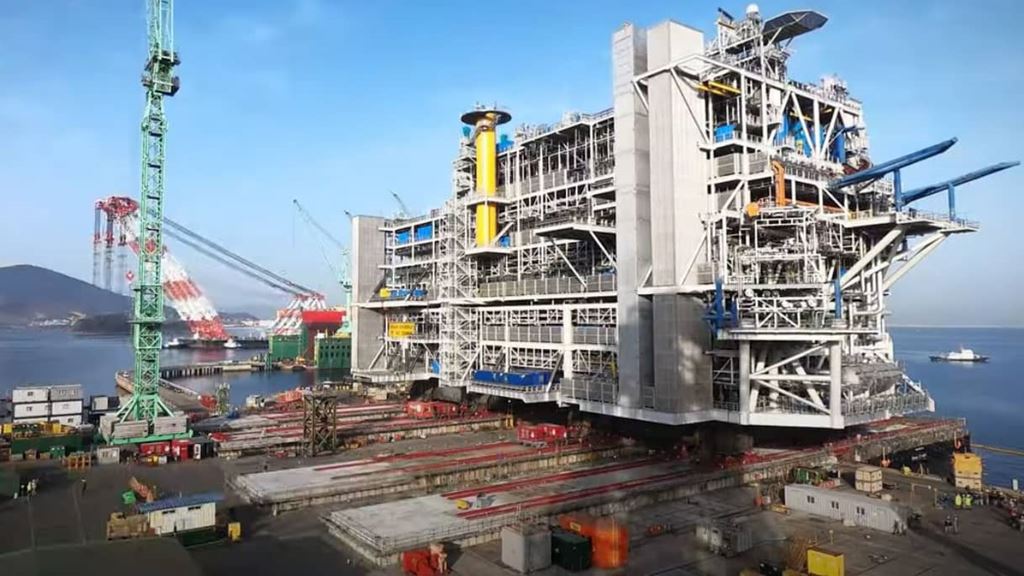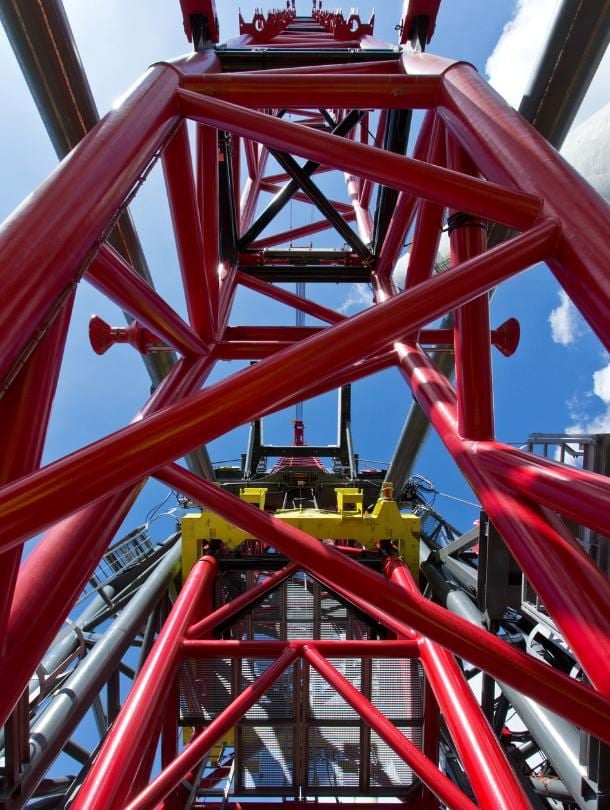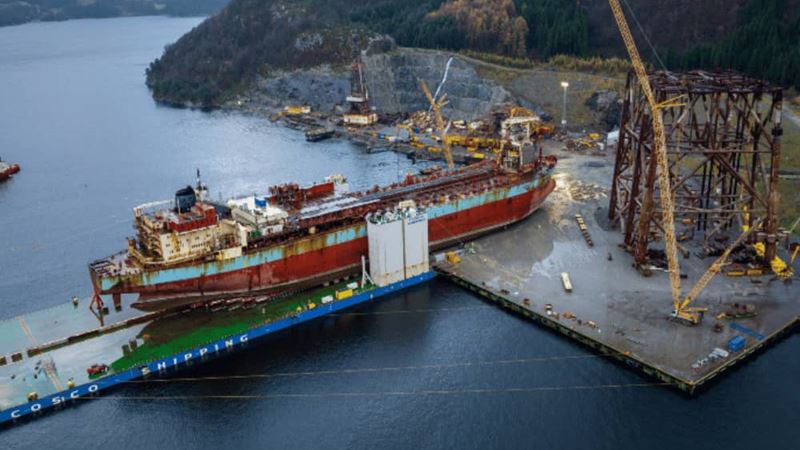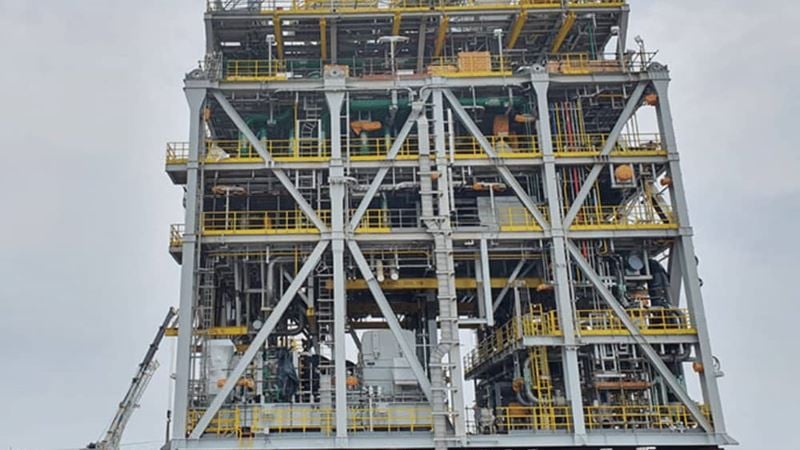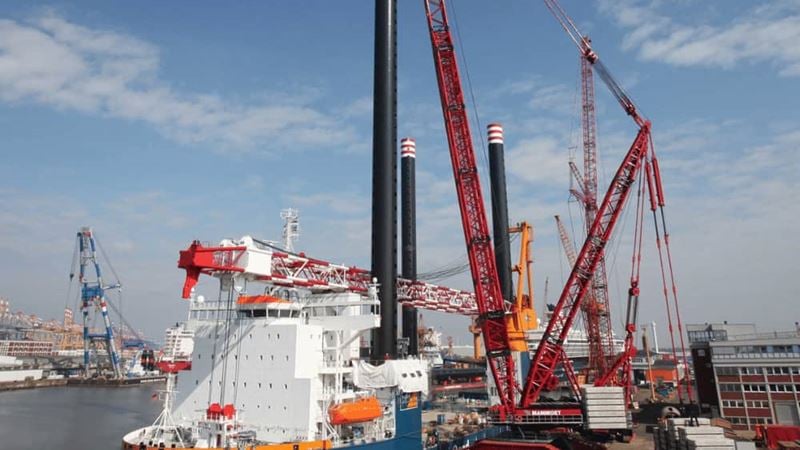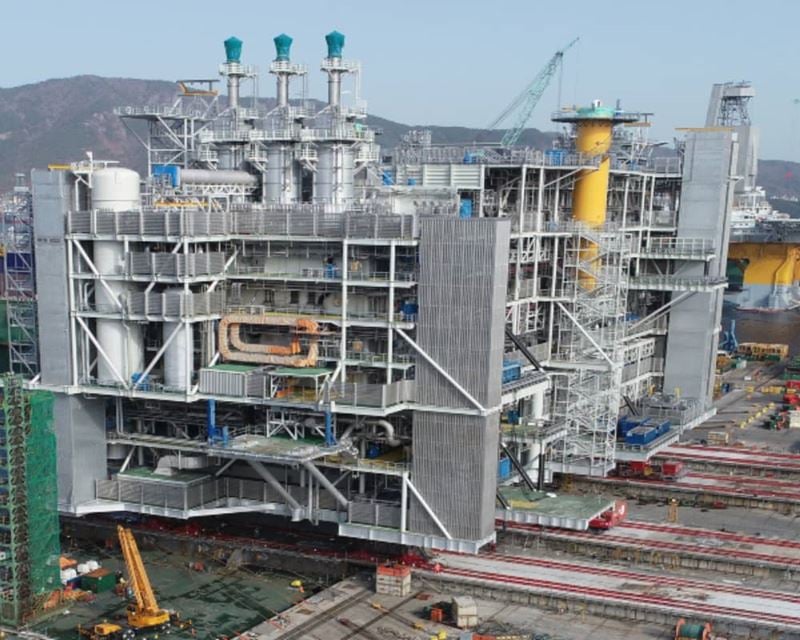
Sector:
Offshore
Expertise:
Load-in & load-out
Skidding
Jacking
Benefits:
Increased safety
Optimized schedule
Record breaker
Location:
Korea, South
Offshore expertise and exemplary safety management enabled Mammoet to perform the efficient load-out of four modules, weighing a total of 53,403t, for the Johan Sverdrup project in South Korea.
Mammoet completed three of the load-outs on the same quay in just two weeks. The first phase of the operation was an award-winning weighing and load-out of three riser platform modules, weighing 6,223t, 9,239t, and 9,766t respectively, and measuring approximately 80m x 20m x 30m, with each module loaded out consecutively onto a heavy transport vessel (HTV).
An extra crew was brought in to ensure that employees would be guaranteed enough rest during the two-week operation and this also meant the complex maneuvers could be carried out at a steady pace.
Mammoet began by installing its skidding equipment underneath the first two modules. The skid tracks were positioned on a foundation of concrete blocks, before skid shoes and push-pull units were put in place. All hydraulics for the push-pull units and skid shoes were connected to power packs at the back of the topside. These were positioned on a small platform, which was skidded along with the topside.
To provide a safe and stable load-out, Mammoet used a link beam as the best way to control the vertical movement of the HTV. Hinge points to hold the link beam was installed on the quay and on the HTV to connect them during the load-out. Mammoet’s specialist offshore services division then carried out the weighing using hydraulic jacks and load cells.
The day before the load-out, the first module was skidded towards the quayside. Using the push-pull units, the average skidding speed achieved on land was 12m per hour.
Mammoet started the load-out operation at low tide and the module was gradually skidded over the link beams onto the HTV. The computerized control of the skidding increased efficiency and provided the most comprehensive overview of the operation for the system’s operator. For increased efficiency and safety, a load-out supervisor was in direct communication with the ballasting control room. This allowed sufficient time for the ballasting and ensured the HTV stayed within the acceptable limits. For the second load-out, the HTV was repositioned and the procedure was repeated.
After the load-out of the first module had been completed, winches pulled the equipment from underneath. On the following day, the skid shoes and push-pull units were removed from the HTV and installed beneath the third module. Once the second load-out was completed, the power packs and their platforms were repositioned to the third module and the remaining hydraulics were connected, ready for when the third load-out began.
Following the first phase of the operation, the customer recognized Mammoet’s communication and management skills with an award for outstanding safety awareness. There were numerous contractors working on the project and the customer was impressed by Mammoet’s communication and time management throughout this phase of the operation.
Mammoet held daily meetings to discuss any safety issues on site, which ensured they could be handled and communicated across all parties consistently, keeping the customer updated regularly on the planning procedures. The customer also praised how Mammoet had managed the tight schedule and site deadlines without compromising on its commitment to safety.
The second phase took place six months later. The fourth and largest module was the processing platform’s topside, weighing 28,174t and measuring 139m x 69m x 72m.
For the weighing operation, Mammoet's offshore services team utilized brand new weighing equipment with an upgraded operating system, enabling Mammoet to provide a much quicker operation that minimized disruption for the client. The topside was then loaded out using the same type of skidding equipment as previously. Mammoet loaded out the module onto a barge, with a link beam again installed to provide the best control.
One of the greatest challenges was that the topside needed to be loaded out sideways onto a barge, instead of longitudinally, which made it more potentially unstable. In addition to this, the tanks of the barge’s internal ballasting system were grouped together and then split into sections. Each section could only ballast or de-ballast, which made controlling the load transfer and tidal ballasting more challenging.
Mammoet's team provided the engineering calculations to overcome this, using Mammoet’s external ballasting system alongside the barge’s own internal ballasting and, in combination with the computerized skidding system, this enabled the team to adjust the skidding speed based on the ballast conditions. Using this precise control, Mammoet positioned the topside on the exact end position of the barge.
From the jack-up to the final set down, the last and largest of the load-outs was completed in 14 hours. Following this, the offshore services team took part in the float-over operation to transfer the topside from the barge to an HTV.
The riser platform and topside are part of four platforms to be installed as part of the Johan Sverdrup oil field project in the North Sea, near Stavanger, Norway.
Mammoet’s meritorious safety management on the project provided consistent and informative communications throughout the challenging operation. The ingenuity of Mammoet’s offshore engineering combined with the dedicated specialist expertise of the specialist offshore services division enabled Mammoet to meet the tight schedules for both phases of the project, whilst ensuring the complex maneuvers were completed as efficiently as possible.
